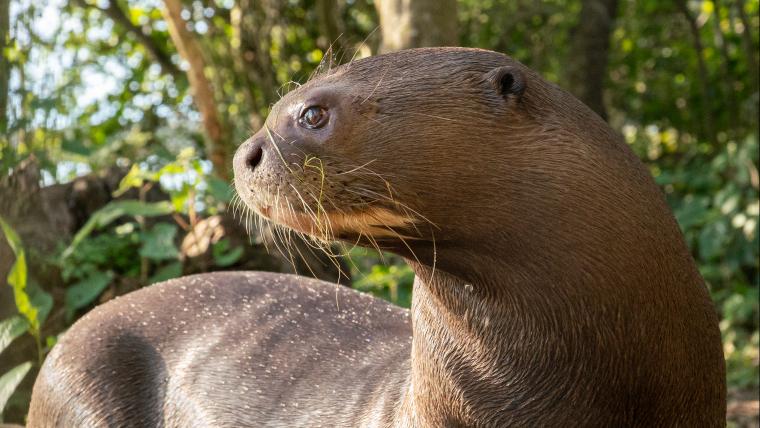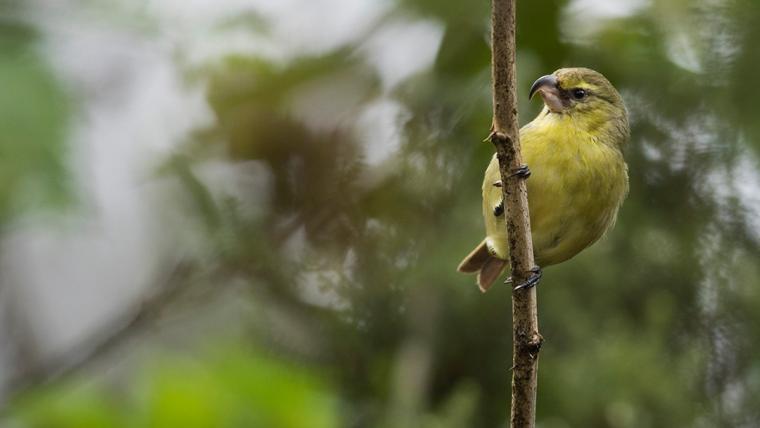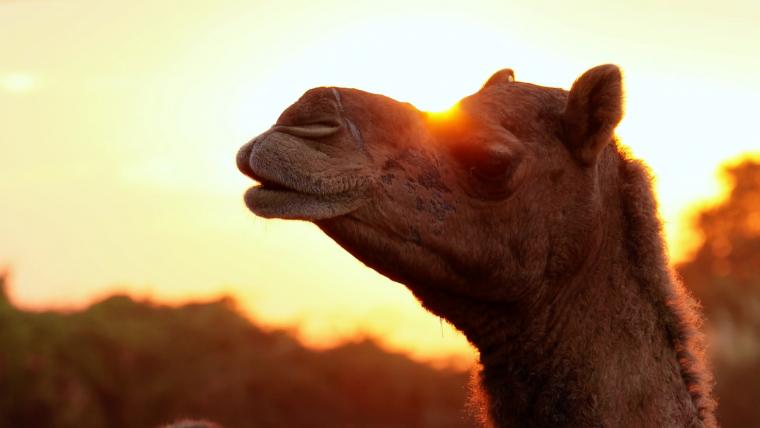
Hunted to extinction in Argentina, giant otters are making a surprising comeback
As dawn spills over the Esteros de Iberá wetland in Argentina, all is still. But ruffling the water’s surface, an elusive creature suddenly emerges. It lets out an ear-splitting bark, ricocheting off the marshes. Known as the ‘water wolf’, the giant otter roamed the region until it was hunted to extinction in the 1950s. Now decades later, this carnivore is returning to its rightful place.
Giant otters make their home in South America’s expansive wetlands, and are typically found splashing in the Amazon and Pantanal. The longest member of the weasel family, these lanky creatures can reach up to 1.8 metres. Every inch of their bodies, even their nose, is covered with dense fur. The velvet-like coat is completely waterproof and enables them to cut through the lagoons. Along with webbed feet and a robust tail, giant otters are excellent swimmers. Darting in the shallows, they can travel up to 100 metres in less than 30 seconds.
These apex predators were designed to hunt. Equipped with razor-edged teeth, giant otters crunch through bones like butter. Their insatiable appetite means they catch and devour two kilograms of fish and crustaceans each day. If they’re still peckish, birds, snakes, and caimans also make scrumptious snacks. Giant otters are social animals and form large groups of up to 20 members. To communicate with each other, they have nine different vocalisations that prompt hunts, naps, grooming times, and bloody battles.
Much like their notorious enemy the jaguar, giant otters regulate prey populations and maintain the area’s ecological balance. But in the 20th century, these water weasels encountered a threat they couldn’t fight off – humans. Facing coastal development, pollution, illegal hunting and poaching, their species was eradicated in Argentina and became critically endangered around the world. Reintroducing them to the country is not only critical for their survival, but for the ecosystems as well.
Thanks to Rewilding Argentina, giant otters are returning to the country for the first time in more than 30 years. In 2019, the team launched a project to relocate one male and one female from foreign zoos to the San Alonso island in Iberá. Since then, the pair have settled into their new home without a hitch and the possibility of a new otter family is on the horizon. With the world’s largest otter finally home, this rare species has the chance to bounce back from the brink.






























Please sign in to leave a comment